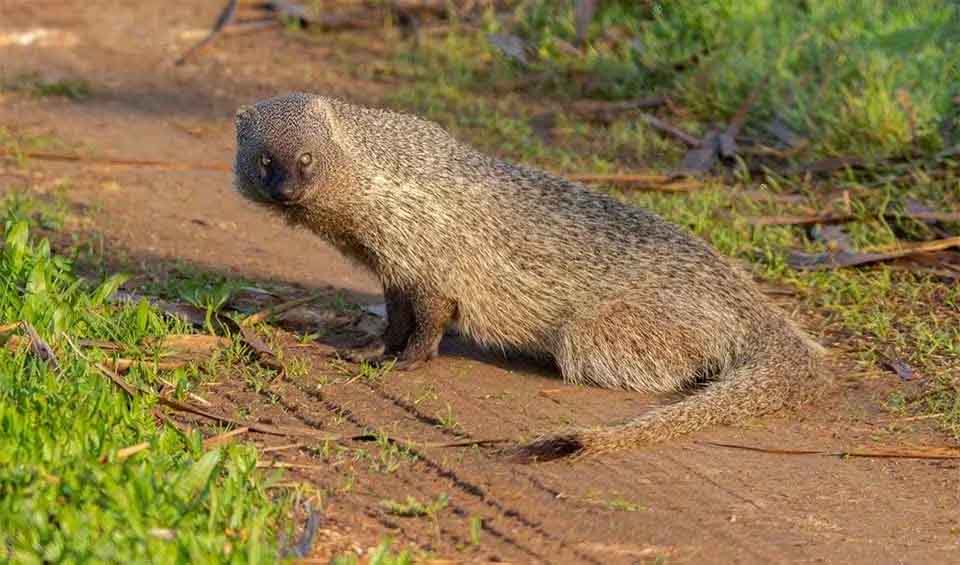A marvel of the animal kingdom found throughout a wide range of habitats in Africa and some parts of Southern Europe and the Middle East. Known for its long, slender body and short limbs, the Egyptian mongoose often gives the illusion of a reptile from a distance. This visual trickery is further enhanced by its shaggy, silvery gray coat adorned with pale and dark hair bands. At the same time, its underparts display a paler hue, providing camouflage within its natural surroundings.
The Egyptian mongoose is a diurnal creature, preferring the daylight hours for most of its activities, though it is uncommon to exhibit nocturnal behaviors. Various factors influence its activity patterns, including the search for food and the need to avoid the hottest parts of the day. Typically, it forages during the cooler hours of early morning or late afternoon, embarking on solitary ventures or moving in pairs to hunt.
The diet of the Egyptian mongoose is remarkably diverse, showcasing its ability to adapt and thrive in various environments. It feeds on a wide array of prey, including small mammals, snakes, birds, frogs, toads, crabs, fishes, and insects. This mongoose also has a particular affinity for fruits and will not hesitate to consume carrion when the opportunity arises. However, one of the most intriguing aspects of its dietary habits is its method of consuming eggs, a favorite delicacy. The Egyptian mongoose has developed a unique technique to access the nutritious contents of an egg without the need for sharp tools. It skillfully throws the egg between its hind limbs against a hard surface, such as a rock or a wall, to crack it open.
Distribution
 Algeria
Algeria Angola
Angola Benin
Benin Botswana
Botswana Burkina Faso
Burkina Faso Burundi
Burundi Cameroon
Cameroon Central Af. Rep.
Central Af. Rep. Chad
Chad Congo-Brazzaville
Congo-Brazzaville Côte D’ivoire
Côte D’ivoire DR Congo (Kinshasa)
DR Congo (Kinshasa) Djibouti
Djibouti Egypt
Egypt Eritrea
Eritrea Eswatini
Eswatini Ethiopia
Ethiopia Gabon
Gabon Gambia
Gambia Ghana
Ghana Guinea-Bissau
Guinea-Bissau Guinea
Guinea Israel
Israel Jordan
Jordan Kenya
Kenya Lebanon
Lebanon Liberia
Liberia Libya
Libya Malawi
Malawi Mali
Mali Mauritania
Mauritania Morocco
Morocco Mozambique
Mozambique Namibia
Namibia Niger
Niger Nigeria
Nigeria Portugal
Portugal Rwanda
Rwanda Senegal
Senegal Sierra Leone
Sierra Leone Somalia
Somalia South Africa
South Africa Spain
Spain Sudan
Sudan Syria
Syria Tanzania
Tanzania Togo
Togo Tunisia
Tunisia Turkey
Turkey Uganda
Uganda Zambia
Zambia Zimbabwe
ZimbabweAnything we've missed?
Help us improve this page by suggesting edits. Glory never dies!
Suggest an editGet to know me
Terrestrial / Aquatic
Altricial / Precocial
Polygamous / Monogamous
Dimorphic (size) / Monomorphic
Active: Diurnal / Nocturnal
Social behavior: Solitary / Pack / Herd
Diet: Carnivore / Herbivore / Omnivore / Piscivorous / Insectivore
Migratory: Yes / No
Domesticated: Yes / No
Dangerous: Yes / No






